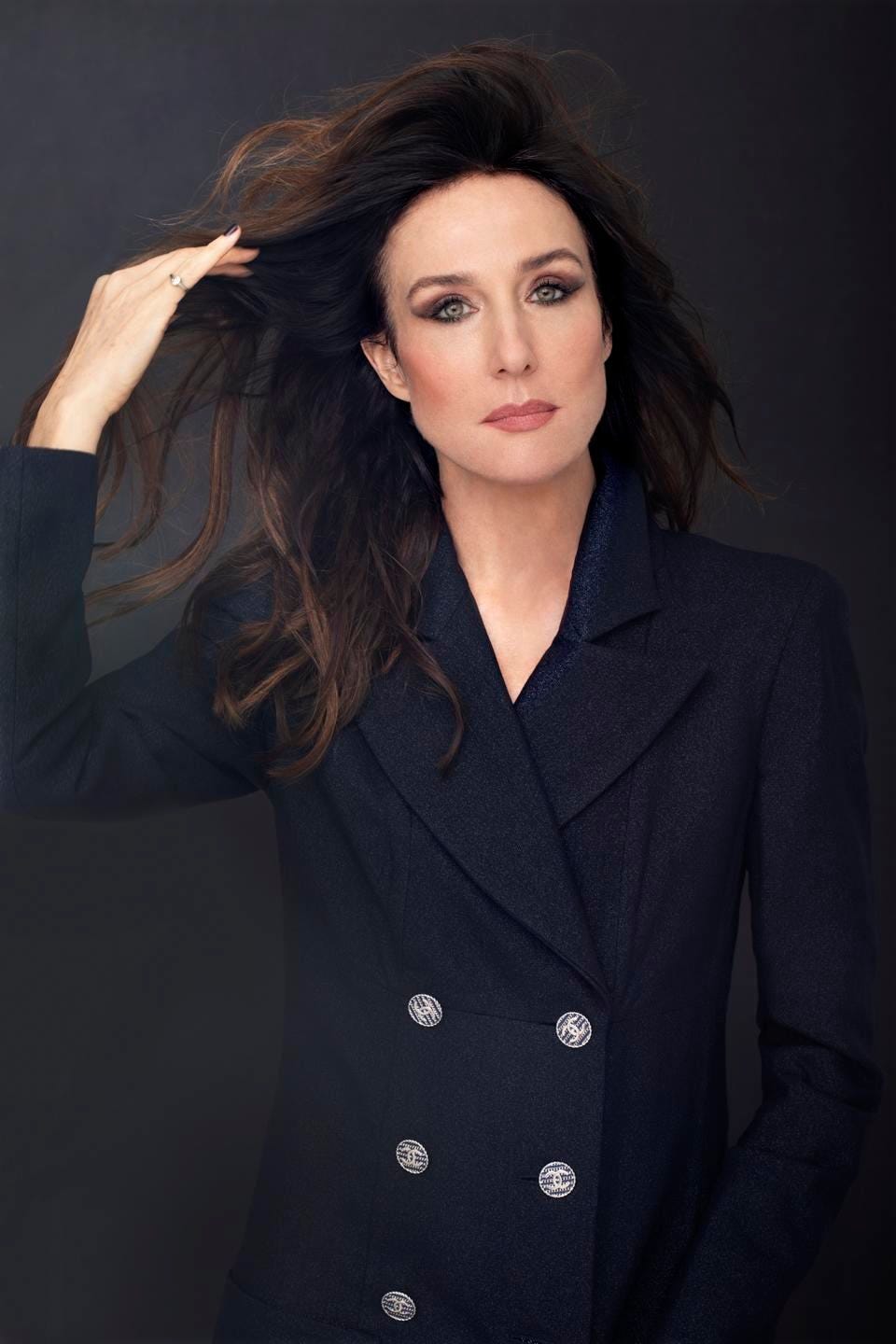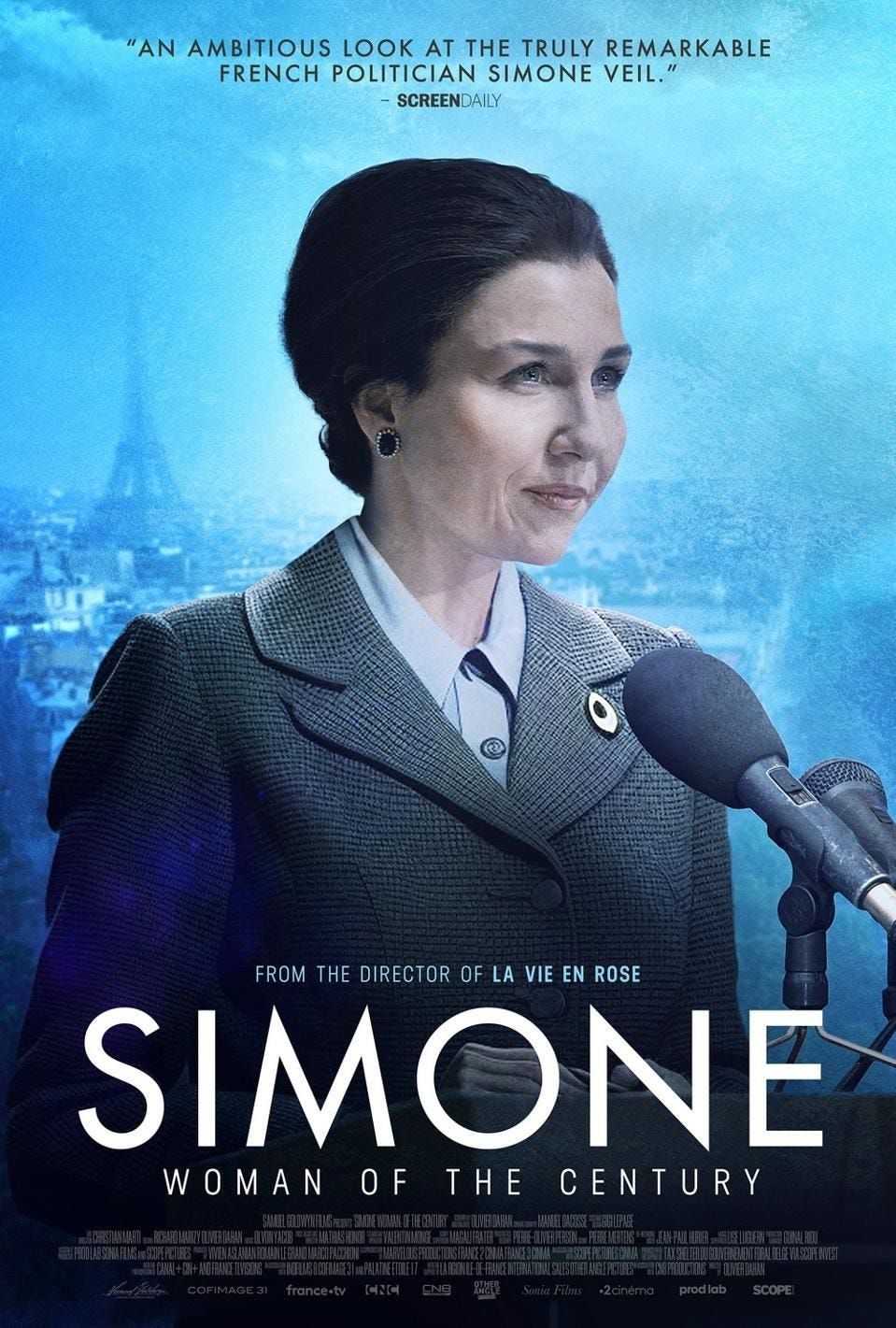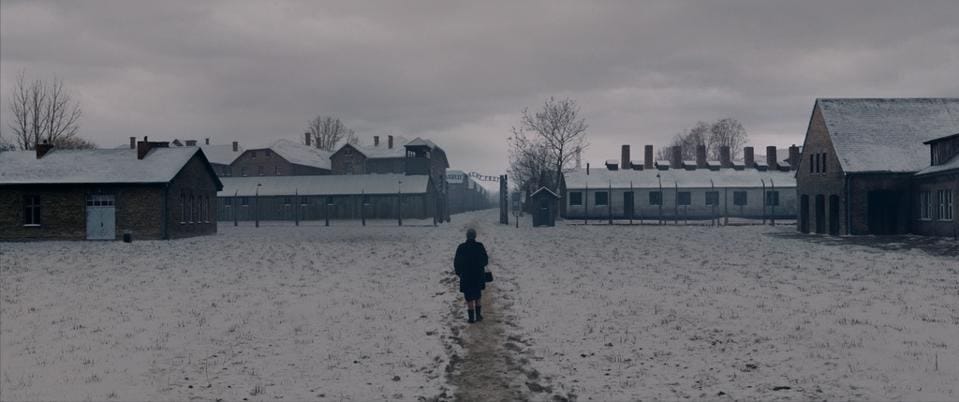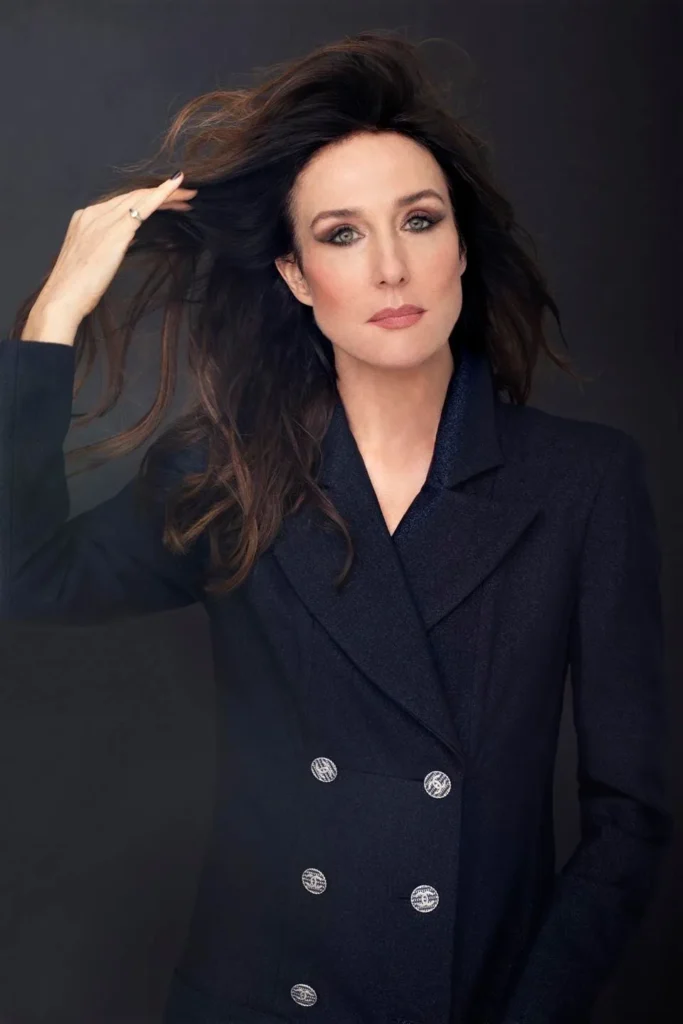Simone Veil was a major figure in France, one of that country’s most popular politicians ever, whose steely will, remarkable determination, and unyielding sense of justice led Veil, who as a teenager was deported to Auschwitz and Bergen Belsen, whose father and brother were murdered by the Nazis and whose mother died in the camps, to fight as an attorney, a magistrate, and a legislator, for the rights of Algerians, for prison reform, for women’s rights – she passed France’s law making abortion legal, and for a united Europe as the first women president of the European Union.
Bringing Simone Veil’s life to the screen has been an almost decade long journey for iconic French actress Elsa Zylberstein who in SIMONE: WOMAN OF THE CENTURY delivers an Oscar-worthy performance sure to turn up on many “best of” lists and award season nominations. The film can be viewed in select theaters and on VOD services including Amazon, Apple and Vudu.

Elsa, who was recently in Los Angeles for a sold-out screening of Simone, told me about her journey to make the film and the cause she’s taken on to keep the memory of Simone Veil and all that she stood for alive and present today, when we need Veil’s example all the more urgently.
Elsa first met Simone Veil when she was asked to present an award given to her by the Hebrew University of Jerusalem. After speaking briefly at the dinner, they met for tea. And then dinner at Elsa’s home; and then dinner at Veil’s home, and then another tea. “I thought she was an exceptional and unique woman who had an incredible journey. And her story had to be told.”
At one point, Elsa let escape the thought: “There should really be a film of your life.” Veil did not reply.
However, several months later, when Elsa was at the hairdresser’s, a woman approached her, excusing herself for disturbing her – but she was Ann Veil, Simone’s daughter-in-law, and she wanted to let Elsa know that Simone had told her that she didn’t want a film made about her life as long as she was alive. However, once she had passed, then it was OK. And that Simone had told her: “There is only one person that I would like to play me and it’s Elsa Zylberstein.”
Simone Veil died in 2018. Her stature was so great the French government voted to give her a state funeral. Her coffin was brought to the Pantheon (One could compare it to lying in state in the US Capitol). Along the way, the streets were lined with women, their daughters and granddaughters holding signs that said, “Merci Simone.” She was buried among “the Immortals” in the Pantheon, following the example set for Marie Curie, among such French national figures as Voltaire, Rousseau, Victor Hugo, Émile Zola, and André Malraux. “France loves Simone Veil,” President Emmanuel Macron said on the steps of the Panthéon.
With the full cooperation of Veil’s family, Elsa set out to get the film made. She approached Olivier Dahan, who made La Vie en Rose, the Edith Piaf biopic starring Marion Cottillard, and whose father had family members murdered by the Nazis. After a three-hour meeting, Dahan signed on to write and direct. Elsa then brought on the film’s producers.

Much like his Piaf film, Dahan chose to tell Veil’s story not chronologically but subjectively as a series of recollections as she writes her memoirs (which were bestsellers in France). What works so well about this approach is that it is character-focused, personal, and intimate. It gives us a window into how Veil saw the world.
Elsa told me that she wanted the film to show not the implacable stoic front that Veil presented to the public, but rather a woman “whose let her hair down.” In Simone, we see the public face, but also Veil’s personal interior life.
To prepare for the film, Elsa spent hours learning Veil’s speeches, how she talked, how she walked, what shoes she wore, what dresses she wore (Chanel agreed to reprint the specific fabrics of the Chanel suits Veil wore). In the film she portrays Simone Veil from age 37 (four hours of makeup every day) to age 87 (seven hours of makeup). The result is that Elsa Zylberstein disappears in the role – and all you see is Simone Veil.

The film takes a long time to bring Simone to Auschwitz, but when it does, we as an audience are ready. Nonetheless it does not present the camp as we are used to seeing it, as the well-ordered systematic factory for murder, we only see it from the subjective viewpoint of Simone. And it is all the more powerful for doing so.
Elsa also spent hours with Veil’s surviving friends. One, a 95-year-old survivor, spent hours speaking to her on the phone, in person, and recording his memories of Veil. Another, Ginette Cherkasky, Veil’s lifelong friend who was with her in the camps, accompanied Elsa to Auschwitz-Birkenau and told her, “Les filles de Birkenau seront toujours filles de Birkenau” (“The women of Birkenau will always be women of Birkenau”)- meaning that the experience of having been in a death camp never leaves you – and we see how it remains the core event that shaped Veil. “I felt lucky to have met them,” Elsa said.
Making this film was important, Elsa told me, because she believes “fiction can lead to documentary” by which she meant that most people, particularly young people, will first learn about a historical subject by seeing a dramatization of a real person’s life. This was true for Elsa who said her first real encounter with the subject of the Holocaust was in Schindler’s List.
After the Los Angeles screening, an old woman came up to Elsa to tell her that this was the second time she’d seen the film. She’d been an educator for more than 40 years and this, in her opinion, was the best Holocaust film she had ever seen.
For Elsa, the journey of playing Simone has become more than a role. It’s become a cause. “Seeing what is going on in the world now…. A week ago, I was in the march against antisemitism in Paris marching with my father [More than 100,000 persons marched along the Champs Elysee]. We have to stand up against racism, any form of racism.”
Simone Veil has also set an example for Elsa in terms of women standing up for themselves and being the driver of one’s own destiny. She has become passionate about telling women-centered stories and, having been a producer on Simone, is now developing several projects about a wide range of strong and significant women around the world. And not just in French or in France: Elsa recently signed with CAA for representation.
“I think that’s part of the gift of Simone,” Elsa told me. “She gave me strength.”

